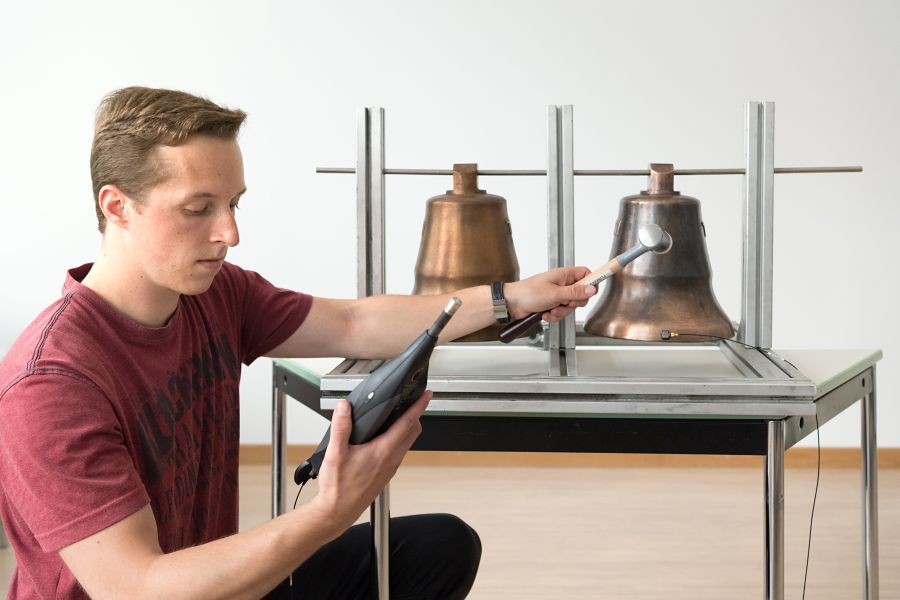Ringing bells: Finding the right note with computer simulations
The jazz bell

The high art of bell casting requires a wealth of experience: In order for the finished bell to create a harmonious sound, the casting mold has to have the exactly right shape, narrow at the top, wide at the bottom, bulges in just the right places. But why? A team with Lennart Moheit of the TUM Chair for Vibroacoustics of Vehicles and Machines tackled this challenging question: "Using what is known as the Finite Element method, the computer can simulate how and at what frequencies a solid body vibrates. These vibrations then generate the characteristic sound."
Bell designs from the computer
To make such a simulation, the TUM team uses computer programs to divide the bell up into many small, virtual cubes, the finite elements mentioned above. When this three-dimensional grid is made to vibrate, the network nodes where the corners of the cubes touch begin to vibrate in a characteristic manner. The representation resembles a bulging hat whose creases move back and forth rhythmically.
The sound of bulging hats
In addition to the movements of the network nodes, when the bell is struck the frequencies that sound particularly loud because of the resonances occurring can also be identified: Here the fundamental tone is dominant, while the multiples of this frequency, e.g. octaves, thirds and fifths, are less pronounced. The characteristic sound of the bell results from the overlapping of these tones, which have different loudnesses and which fade off at different rates.
In order to verify the virtual models, the simulations were compared with the vibration characteristics of real bells. Then the researchers designed a sound taking the expectations associated with a jazz bell as well as psychoacoustic perceptual parameters into account. Its shape was optimized in such a way that it produces the desired A9 chord.
Research with an off-key note
The jazz bell, approximately 30 centimeters tall, has been cast at the TUM Chair of Metal Forming and Casting. A bell expert then identified the resonance frequencies in the traditional manner, using tuning forks. These resonance frequencies can then be compared with the results of the computer simulation and precise acoustic measurements. "This is the first time that the sound of a bell has been designed and optimized with regard to structural dynamics and psychoacoustic parameters. The chance to actually cast a first prototype of a virtually designed bell right here on the TUM campus and subject it to a realistic check is absolutely unique," Moheit emphasizes.
The engineer goes on to explain that there is a reason why the jazz chord produced by the bell sounds so off-key and unusual, or at least very different from the sound usually expected from a bell: "As acousticians we're interested in how people react to unusual tones." The researchers will be able to use the bell to derive fundamental discoveries about the expectations placed on a sound and their actual effect. "We intend to further investigate this in combination with sound design and optimization."
More information:
images for editorial use:
Contact:
Lennart Moheit
Technical University of Munich
Tel.: +49(0)89/289-55126
lennart.moheit@tum.de